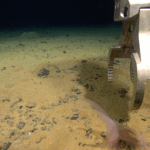The next four humans in the parade of SpaceX launches from the Space Coast will have to wait at least another day for their trip to the International Space Station
phys.org42- Page
The first black hole images stunned the world in 2019, with headlines announcing evidence of a glowing doughnut-shaped object from the center of galaxy Messier 87 (M87 —55 million light
The head of Russia’s space agency Roscosmos said Thursday that he had agreed with his NASA counterpart during talks in the United States to extend the International Space Station’s (ISS)
Deep in the heart of our galaxy lies one of the most chaotic and mysterious regions in space. Now, scientists have created the first detailed map of magnetic fields in
Thick clouds prompted SpaceX to call off Thursday’s planned launch of four astronauts to the International Space Station for NASA.
Science is driven by our desire to understand things. In some cases, where it requires significant effort and investment to develop systems that can understand new things, science benefits from
A new study published in July 2025 tackles one of science’s most profound mysteries—how did life first emerge from nonliving matter on early Earth? Using cutting edge mathematical approaches, researcher
Since the discovery of planetary nebulae in the late 1700s, astronomers have learned that these expanding shells of glowing gas expelled by low-intermediate mass stars late in their lives can
Ice crystals in Earth’s atmosphere sometimes align just right to create various striking visual effects, from a halo around the moon, to bright spots called sundogs on either side of
I’m not exaggerating when I say that our studies of the moon have unlocked the mysteries of the universe.
-
 012024 in Review: Highlights from NASA in Silicon Valley
012024 in Review: Highlights from NASA in Silicon Valley -
 02Panasonic Leica Summilux DG 15mm f/1.7 ASPH review
02Panasonic Leica Summilux DG 15mm f/1.7 ASPH review -
 03From Polymerization-Enabled Folding and Assembly to Chemical Evolution: Key Processes for Emergence of Functional Polymers in the Origin of Life
03From Polymerization-Enabled Folding and Assembly to Chemical Evolution: Key Processes for Emergence of Functional Polymers in the Origin of Life -
 04How New NASA, India Earth Satellite NISAR Will See Earth
04How New NASA, India Earth Satellite NISAR Will See Earth -
 05And Thus Begins A New Year For Life On Earth
05And Thus Begins A New Year For Life On Earth -
 06Astronomy Activation Ambassadors: A New Era
06Astronomy Activation Ambassadors: A New Era -
07SpaceX launch surge helps set new global launch record in 2024





